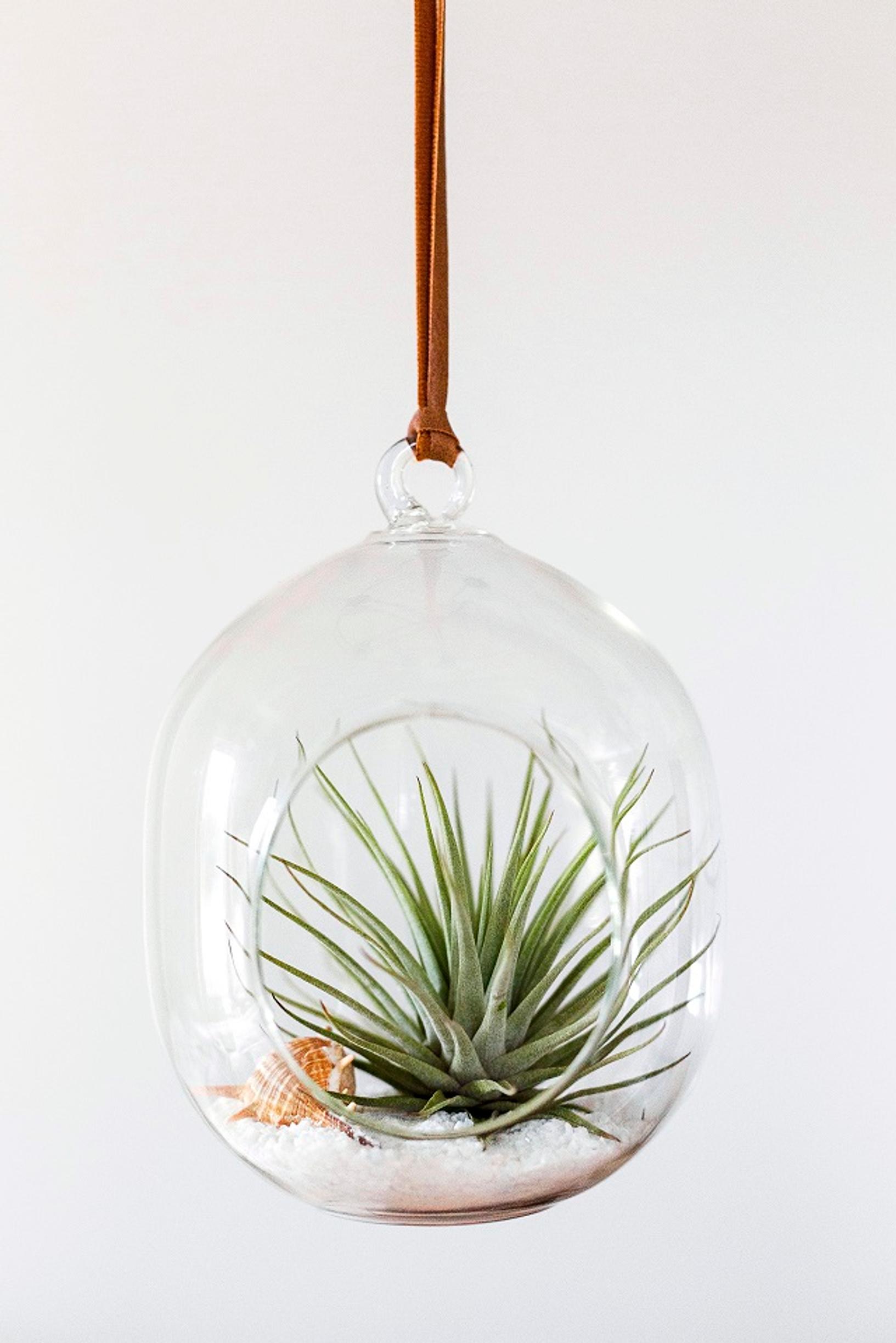
Air plants: The prettiest varieties and care tips
Charming air plants don’t need soil, as they absorb the moisture they need from the air through their leaves. Read on for tips on caring for different air plants.
In the protective environment of a glass terrarium, the air plant can make use of the moisture it releases through evaporation. Create a mini landscape in the terrarium with sand, stones, and seashells.
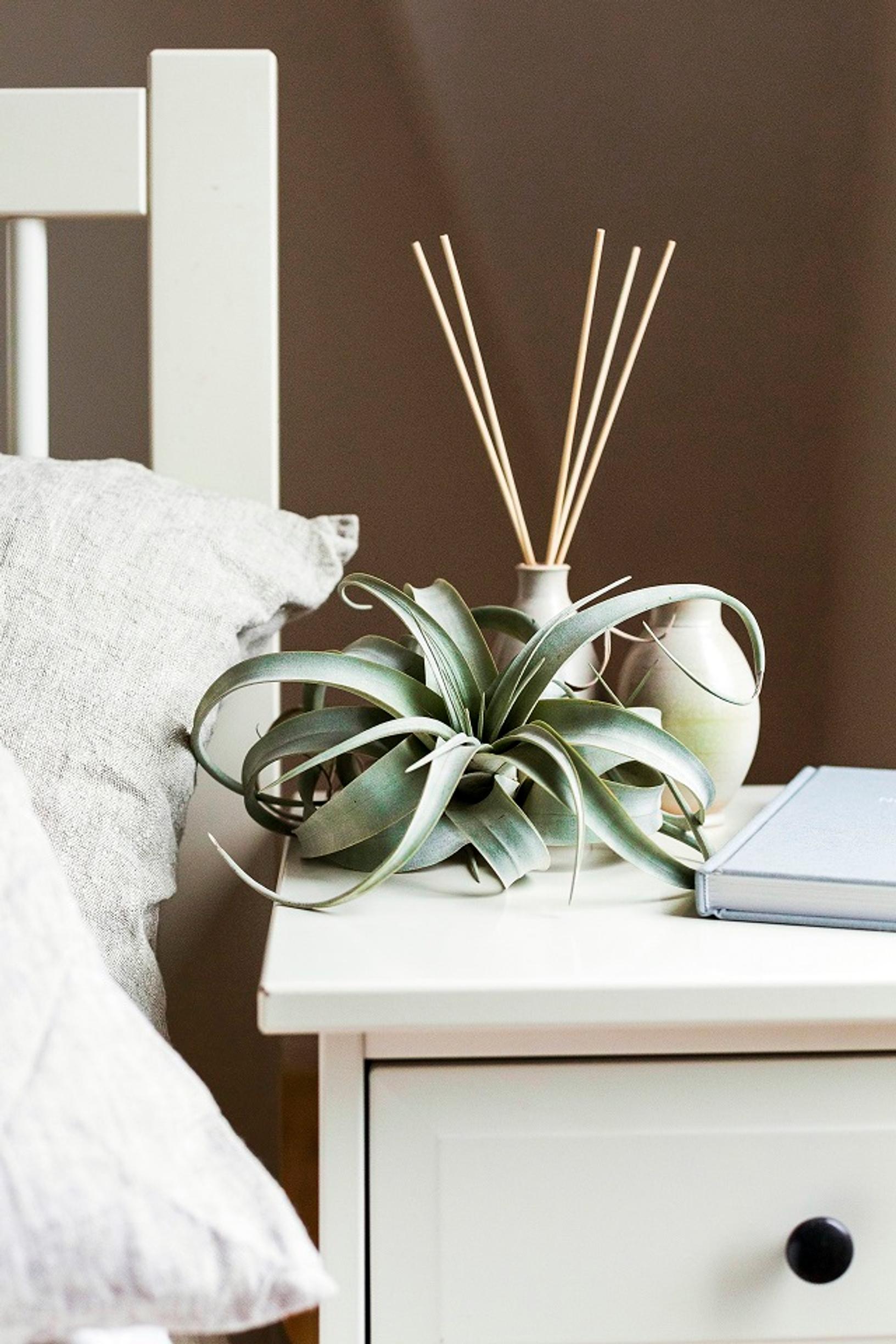
Tillandsia xerographica is the king of air plants. This large and striking plant looks beautiful on a bedside table as an eye-catcher.
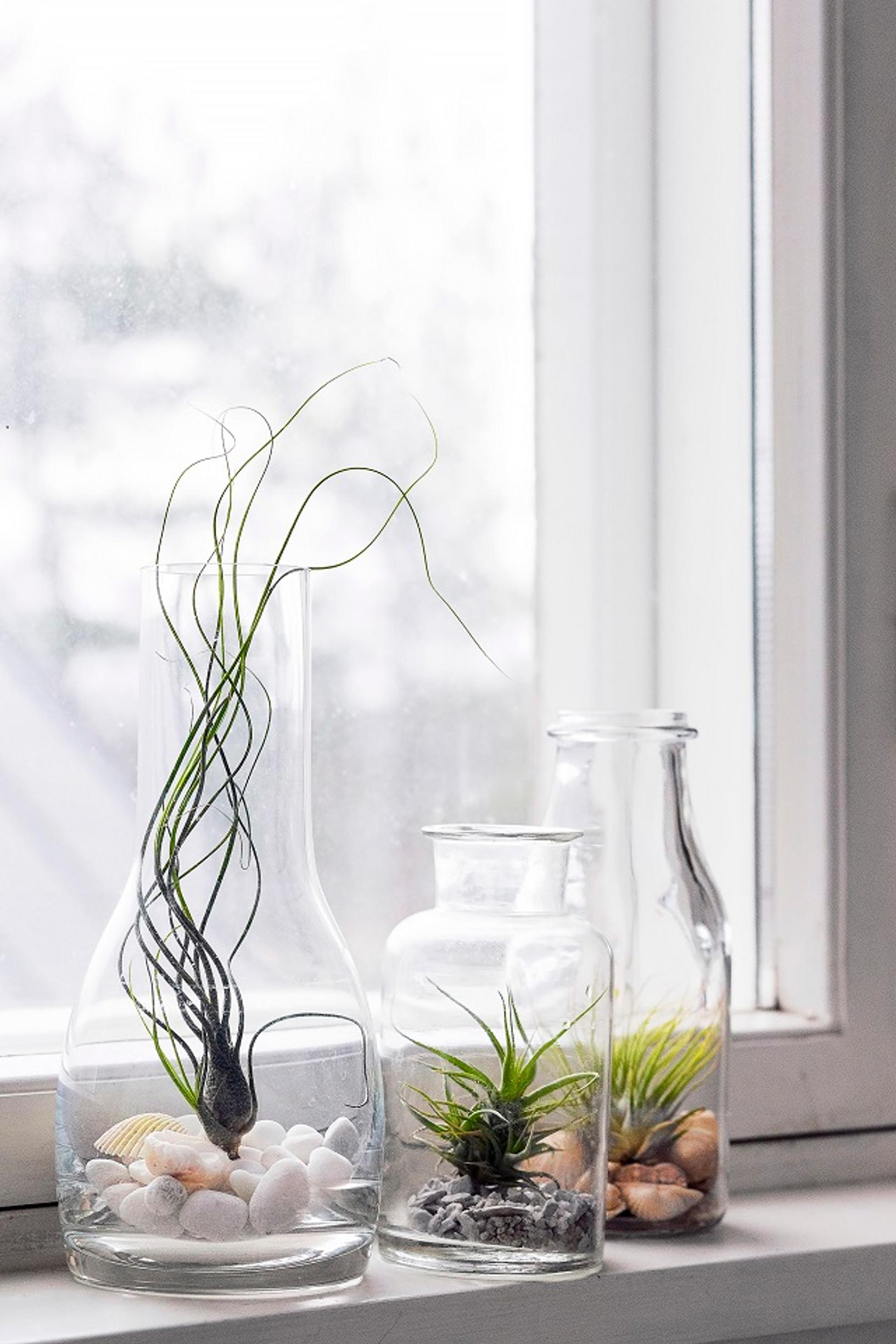
Upright, narrow-leaved air plants, like Tillandsia bulbosa (on the left), thrive in a glass bottle or carafe. Air plants in a bottle terrarium should be misted more sparingly, because moisture stays trapped inside the bottle more effectively.
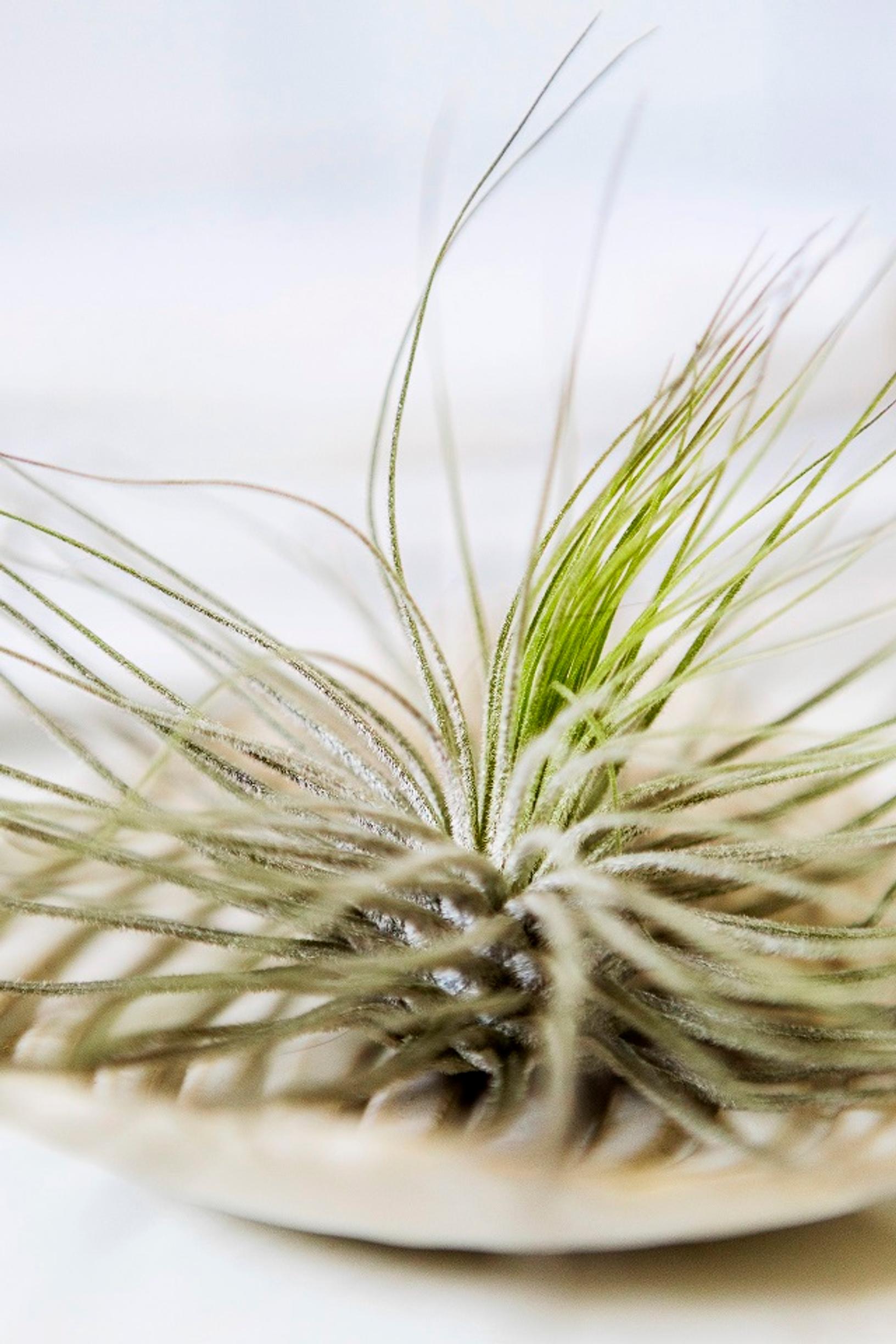
Tillandsia magnusiana has narrow, tufted leaves. It tends to dry out more quickly in dry indoor air, so remember to mist it regularly or grow it under a glass dome.
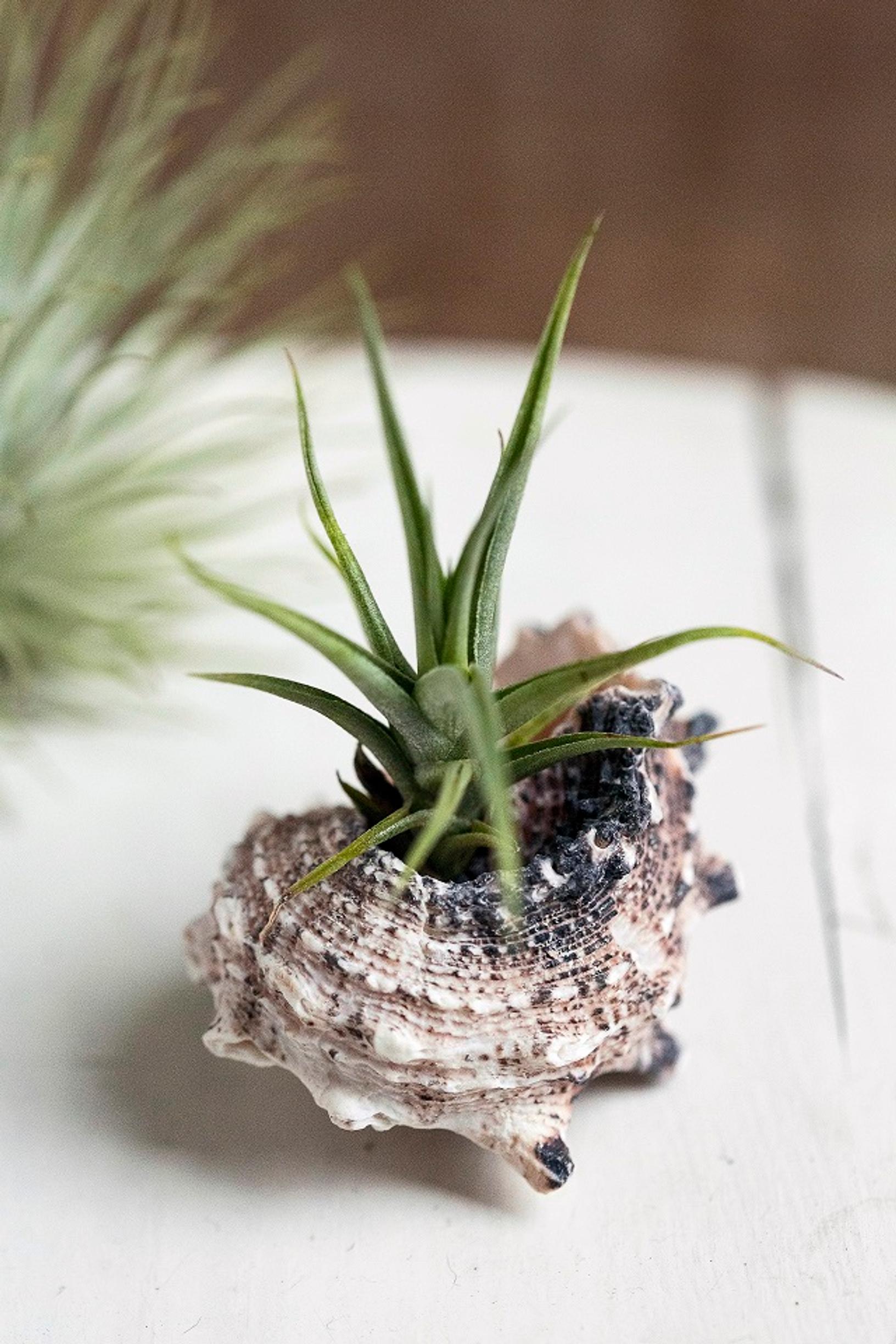
You can make small, attractive focal points with tillandsias by pairing them with seashells. A large seashell can also serve as a base for an air plant. Pictured: Tillandsia aeranthos.
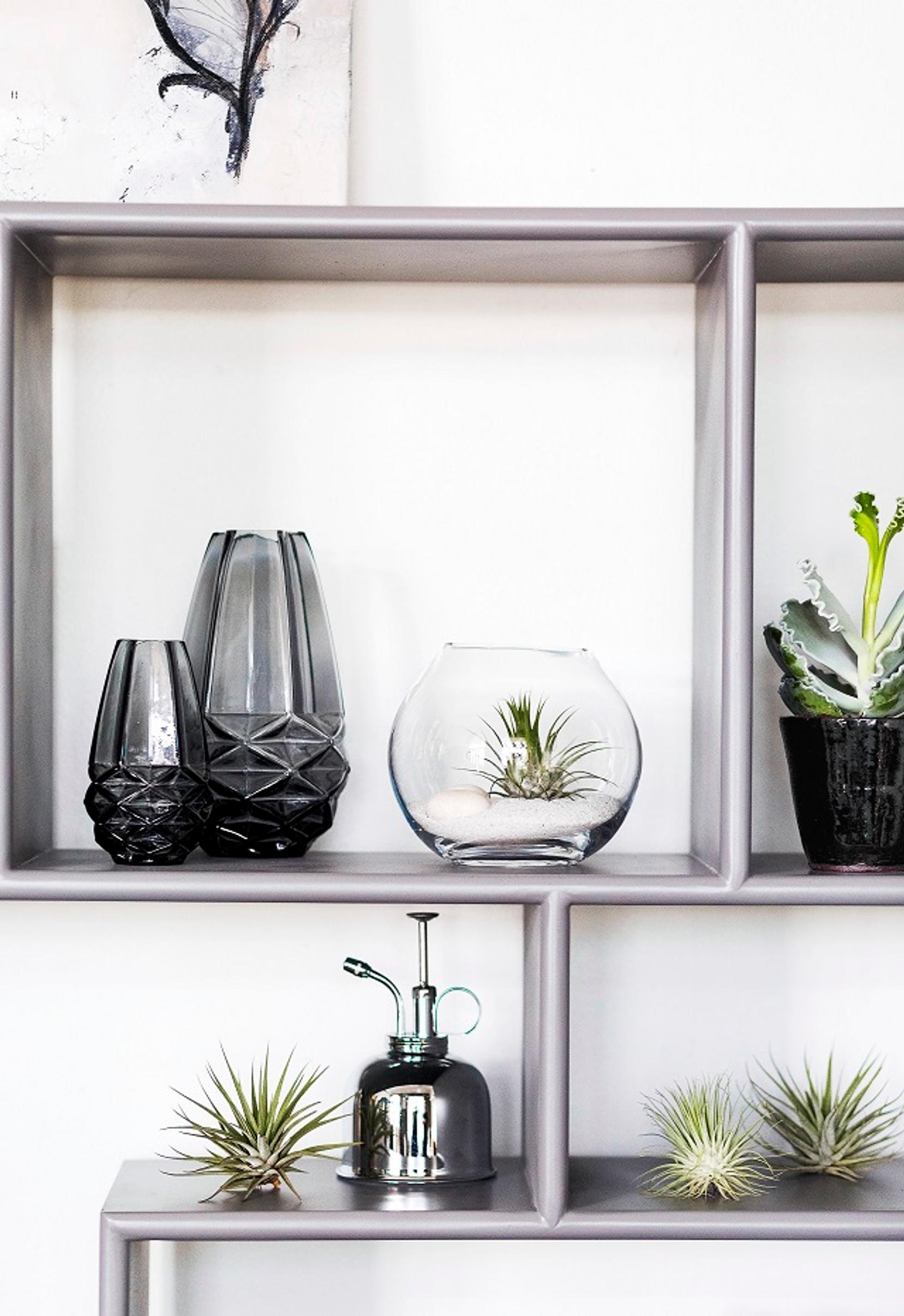
You can arrange air plants into a delicate, striking display on a shelf. Place them inside a glass bowl for a terrarium-style scene or simply display them on their own. Pictured here: Tillandsia ionantha, Tillandsia vriesea, and Tillandsia argentea Mexico, among others. The silver crown (Cotyledon undulata), here growing in a pot, is ideal for anyone who tends to forget watering.
Air plants: tips for care
- Air plants are the fascinating oddities of the plant kingdom. Instead of using their roots for moisture and nutrients, they absorb what they need from the air through their leaves. As epiphytes, they attach themselves to a host plant’s branches without causing it any harm.
- Because our indoor air is drier than in their native habitats in South and Central America, you can water air plants by misting them every day or every other day or by submerging them. If you choose submersion, fill a container with lukewarm water and soak the plants for about fifteen minutes. A suitable interval for submersion can range from one to four weeks depending on the plant, as well as indoor temperature and dryness.
- Occasionally, add a pinch of flower fertilizer and seaweed extract to the water used for submersion. The solution should be very mild, as air plants don’t typically get many nutrients in their natural environment either.
- After watering, turn the air plants upside down and gently shake out any excess water so it doesn’t get trapped between their leaves.
- Air plants with silvery-gray foliage can handle bright light and dryness better, while greener varieties do best in shade or diffused light. Overall, indirect light is best for air plants.


